
Select the structure of the major product formed when 1-methylcyclobutane reacts with $ B{r_2} $ in presence of light.
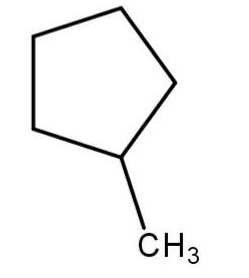
(a)

(b)
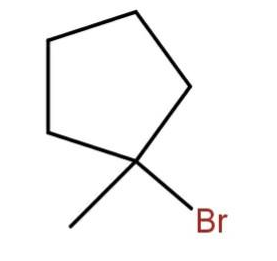
(c)
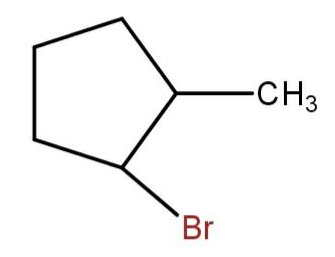
(d)
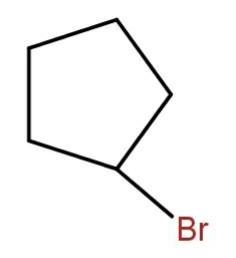





Answer
532.2k+ views
Hint: In these questions, we have to know the reaction of a given structure with $ B{r_2} $ in presence of the light and then the stability of which structure is maximum, will be the major product. The stability will depend on the intermediate.
Complete step by step solution:
Here, first we start with the reaction of the given structure with $ B{r_2} $ in the presence of light:
In these reactions, first the bromine forms free radical when exposed to the sunlight. The bromine will replace the hydrogen from that place, where the removal of hydrogen makes the carbocation most stable.

As the tertiary carbon is the most stable carbocation. So, the bromine will attach to the tertiary carbon.
Hence, the major product will be
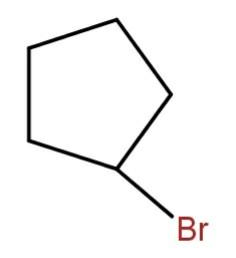
Hence, the correct option is (d).
Additional Information:
Carbocation: The carbocation is a molecule which is having a positive charge and three bonded atoms.
A carbocation is formed as an intermediate in a reaction, with the loss of one electron.
The carbocation are of three types:
(a) Primary Carbocation
(b) Secondary Carbocation
(c) Tertiary Carbocation
The definitions of different types of carbocation:
(a) Primary Carbocation: The carbocation in which carbon is bonded with two hydrogens and one carbon atom.
(b) Secondary Carbocation: The carbocation in which carbon is bonded with one hydrogen and two carbon atoms.
(c) Tertiary Carbocation: The carbocation in which carbon is bonded with three carbon atoms only.
Note:
When the reaction, there are formation of many minor products. Minor products are at all those positions where the carbocation can be formed. But the major will be the product, which has the highest stable carbocation.
Complete step by step solution:
Here, first we start with the reaction of the given structure with $ B{r_2} $ in the presence of light:
In these reactions, first the bromine forms free radical when exposed to the sunlight. The bromine will replace the hydrogen from that place, where the removal of hydrogen makes the carbocation most stable.

As the tertiary carbon is the most stable carbocation. So, the bromine will attach to the tertiary carbon.
Hence, the major product will be

Hence, the correct option is (d).
Additional Information:
Carbocation: The carbocation is a molecule which is having a positive charge and three bonded atoms.
A carbocation is formed as an intermediate in a reaction, with the loss of one electron.
The carbocation are of three types:
(a) Primary Carbocation
(b) Secondary Carbocation
(c) Tertiary Carbocation
The definitions of different types of carbocation:
(a) Primary Carbocation: The carbocation in which carbon is bonded with two hydrogens and one carbon atom.
(b) Secondary Carbocation: The carbocation in which carbon is bonded with one hydrogen and two carbon atoms.
(c) Tertiary Carbocation: The carbocation in which carbon is bonded with three carbon atoms only.
Note:
When the reaction, there are formation of many minor products. Minor products are at all those positions where the carbocation can be formed. But the major will be the product, which has the highest stable carbocation.
Recently Updated Pages
Why are manures considered better than fertilizers class 11 biology CBSE

Find the coordinates of the midpoint of the line segment class 11 maths CBSE

Distinguish between static friction limiting friction class 11 physics CBSE

The Chairman of the constituent Assembly was A Jawaharlal class 11 social science CBSE

The first National Commission on Labour NCL submitted class 11 social science CBSE

Number of all subshell of n + l 7 is A 4 B 5 C 6 D class 11 chemistry CBSE

Trending doubts
Differentiate between an exothermic and an endothermic class 11 chemistry CBSE

10 examples of friction in our daily life

One Metric ton is equal to kg A 10000 B 1000 C 100 class 11 physics CBSE

Difference Between Prokaryotic Cells and Eukaryotic Cells

1 Quintal is equal to a 110 kg b 10 kg c 100kg d 1000 class 11 physics CBSE

State the laws of reflection of light




